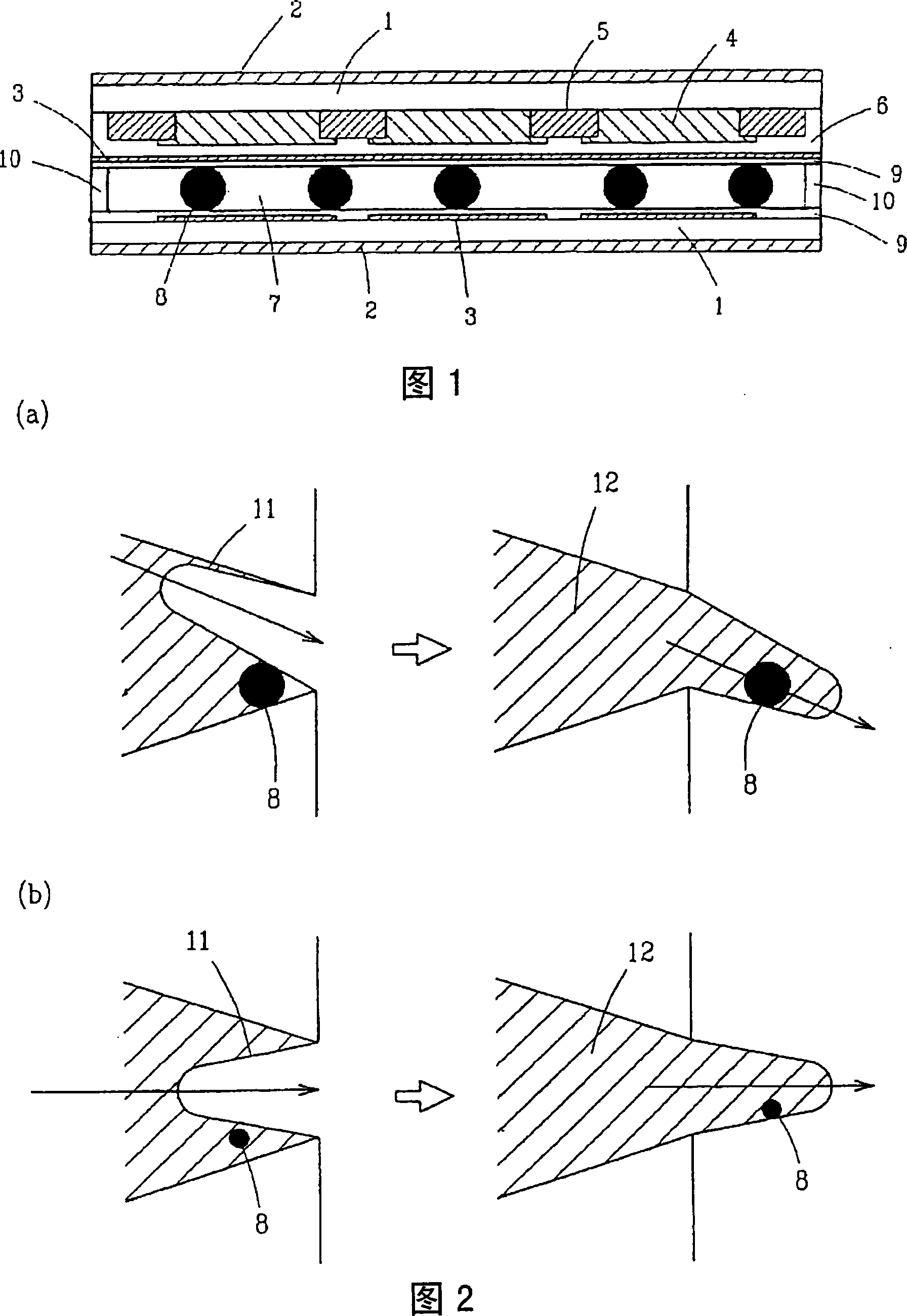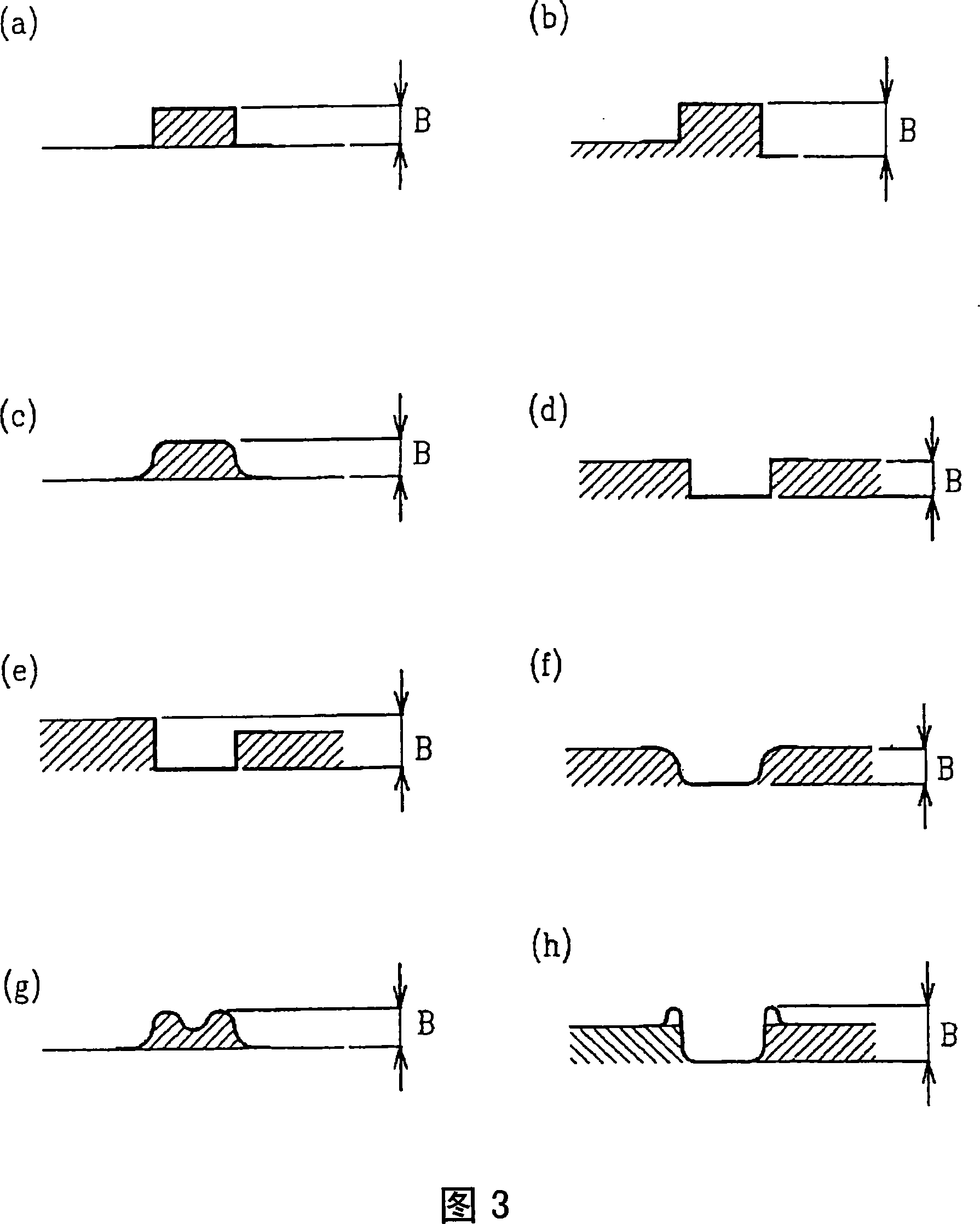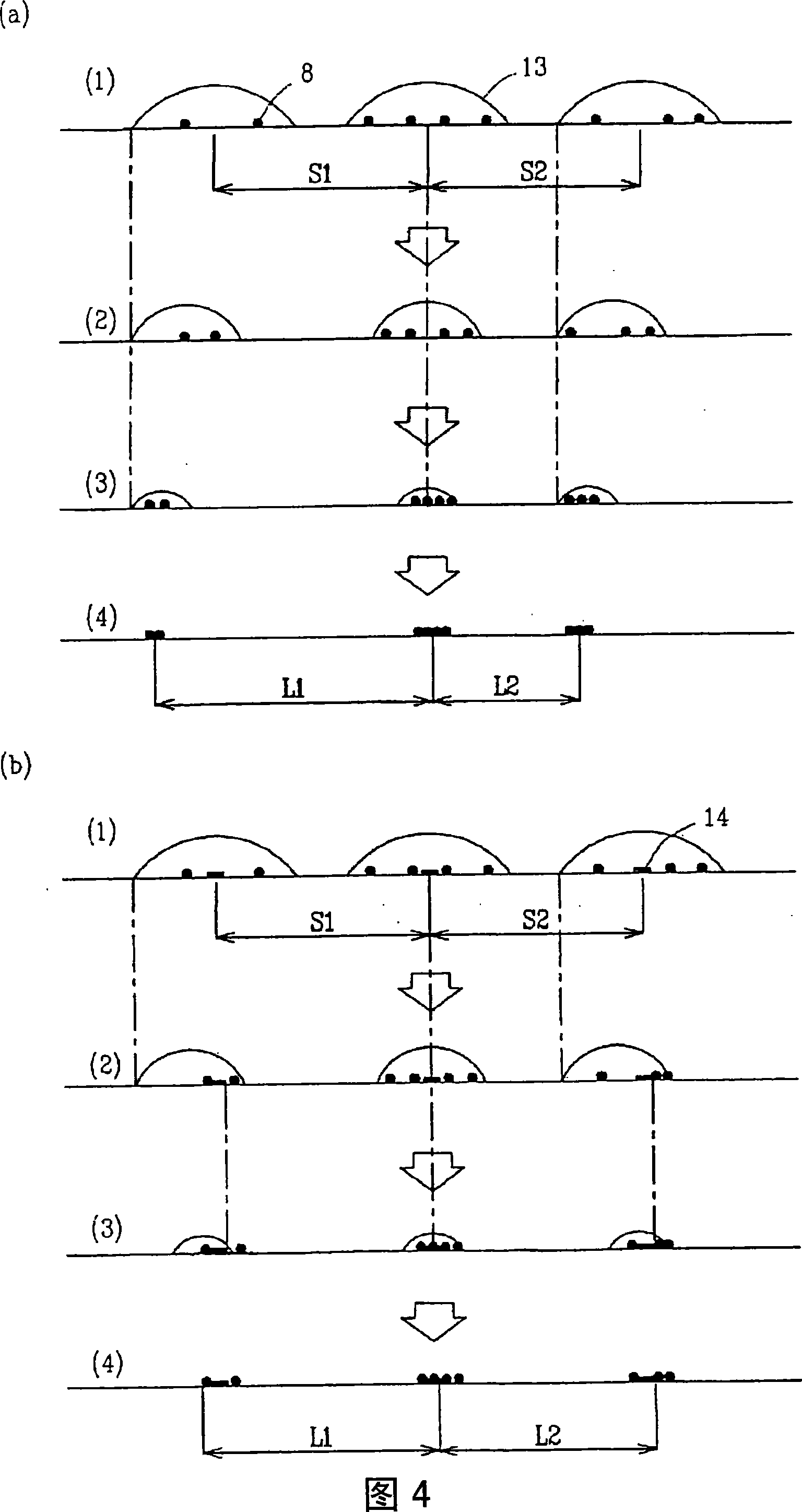Liquid crystal display device manufacturing method
A technology of a liquid crystal display device and a manufacturing method, which is applied in the directions of printing, optics, instruments, etc., can solve the problems that the quality of the liquid crystal cannot be sufficiently improved, and the size of the droplet becomes larger.
- Summary
- Abstract
- Description
- Claims
- Application Information
AI Technical Summary
Problems solved by technology
Method used
Image
Examples
Embodiment 1-13
[0208] Using the spacer particle dispersion and the substrate shown in Table 1, liquid crystal display elements were produced by the following method.
[0209] (Modulation of isolated particles)
[0210]In a separable flask, 15 parts by weight of divinylbenzene, 5 parts by weight of isooctyl acrylate, 1.3 parts by weight of benzoyl peroxide as a polymerization initiator were uniformly mixed, and then polyvinyl alcohol (GL-03 , Kuraray Co., Ltd.)'s 3% aqueous solution 20 parts by weight, sodium lauryl sulfate 0.5 parts by weight, fully stirred, and then added 140 parts by weight of ion-exchange water. While stirring this solution, it was reacted at 80°C for 15 hours under a nitrogen stream. The obtained particles are washed with hot water and acetone, and then a classification operation is performed to volatilize the acetone to obtain isolation particles (S). The average particle diameter of the obtained particles was 4 μm, and the CV value was 3.0%.
[0211] (Surface modification ...
Embodiment 14-26
[0252] (Modulation of isolated particles)
[0253] In a separable flask, 15 parts by weight of divinylbenzene, 5 parts by weight of isooctyl acrylate, 1.3 parts by weight of benzoyl peroxide as a polymerization initiator were uniformly mixed, and then polyvinyl alcohol (GL-03 , Kuraray Co., Ltd.)'s 3% aqueous solution 20 parts by weight, sodium lauryl sulfate 0.5 parts by weight, fully stirred, and then added 140 parts by weight of ion-exchange water. While stirring this solution, it was reacted at 80°C for 15 hours under a nitrogen stream. The obtained particles were washed with hot water and acetone, and then subjected to a classification operation to obtain spacer particles having an average particle diameter of 4.0 μm and a CV value of 3.0%.
[0254] (Surface modification of isolated particles)
[0255] Put 5 parts by weight of the obtained spacer particles into 20 parts by weight of dimethyl sulfoxide (DMSO), 2 parts by weight of hydroxymethyl methacrylate, and 18 parts by we...
Embodiment 27-46 and comparative example 1-4
[0310] (Production of isolated seed particles)
[0311] Into the separable flask, 15 parts by weight of divinylbenzene, 5 parts by weight of isooctyl acrylate, and 1.3 parts by weight of benzoyl peroxide as a polymerization initiator were put into the separable flask, and they were uniformly stirred and mixed.
[0312] Then, 20 parts by weight of a 3% by weight aqueous solution of polyvinyl alcohol (trade name "Kuraray Paba-LU GL-03", manufactured by Kuraray) and 0.5 parts by weight of sodium lauryl sulfate were added, mixed uniformly, and then ion-exchanged water was added 140 parts by weight.
[0313] Next, while stirring the mixed aqueous solution under a nitrogen stream, a polymerization reaction was performed at 80° C. for 15 hours to obtain fine particles. The obtained fine particles are thoroughly washed with hot water and acetone, and then the classification operation is carried out to volatilize the acetone, thereby producing isolation seed particles (α). The average part...
PUM
| Property | Measurement | Unit |
|---|---|---|
| boiling point | aaaaa | aaaaa |
| particle diameter | aaaaa | aaaaa |
| particle diameter | aaaaa | aaaaa |
Abstract
Description
Claims
Application Information
 Login to View More
Login to View More - R&D
- Intellectual Property
- Life Sciences
- Materials
- Tech Scout
- Unparalleled Data Quality
- Higher Quality Content
- 60% Fewer Hallucinations
Browse by: Latest US Patents, China's latest patents, Technical Efficacy Thesaurus, Application Domain, Technology Topic, Popular Technical Reports.
© 2025 PatSnap. All rights reserved.Legal|Privacy policy|Modern Slavery Act Transparency Statement|Sitemap|About US| Contact US: help@patsnap.com



